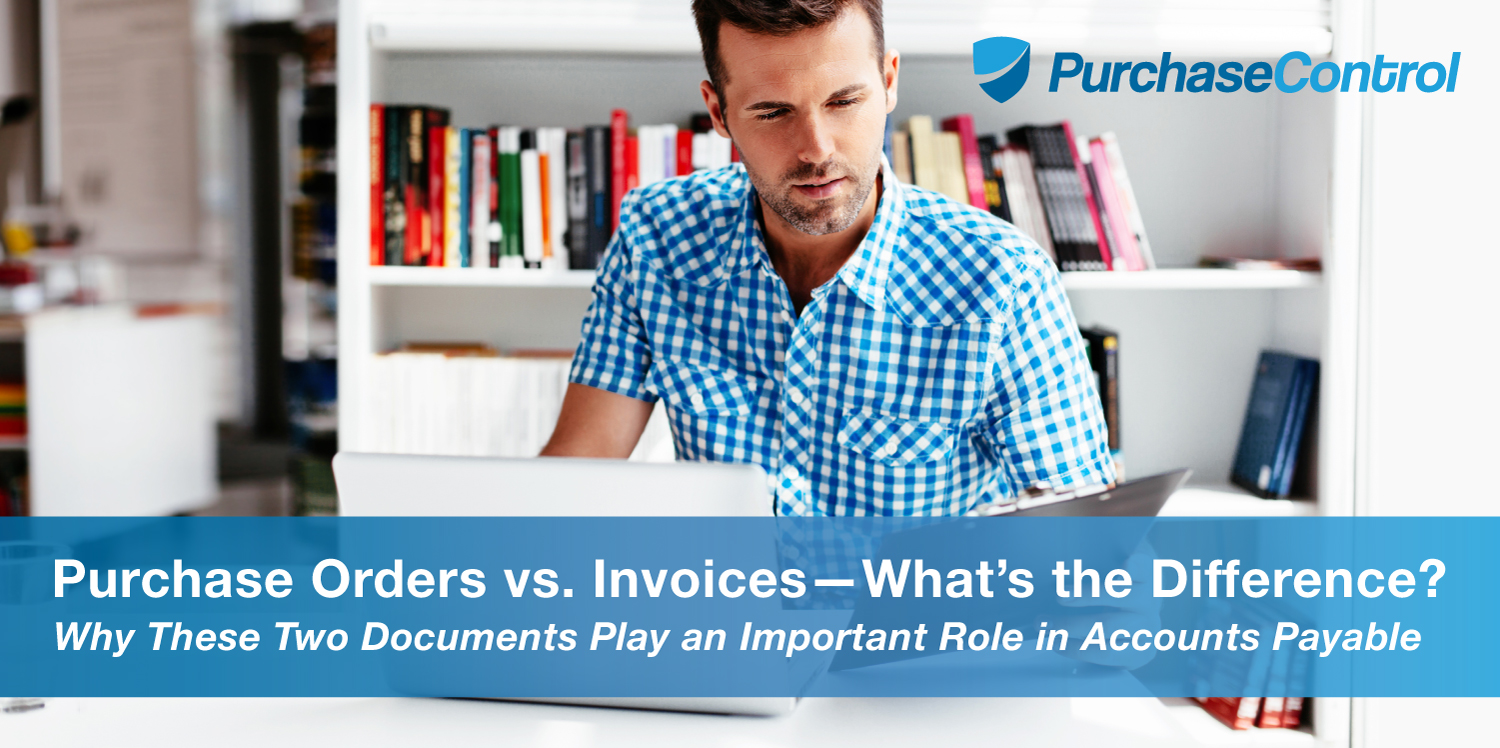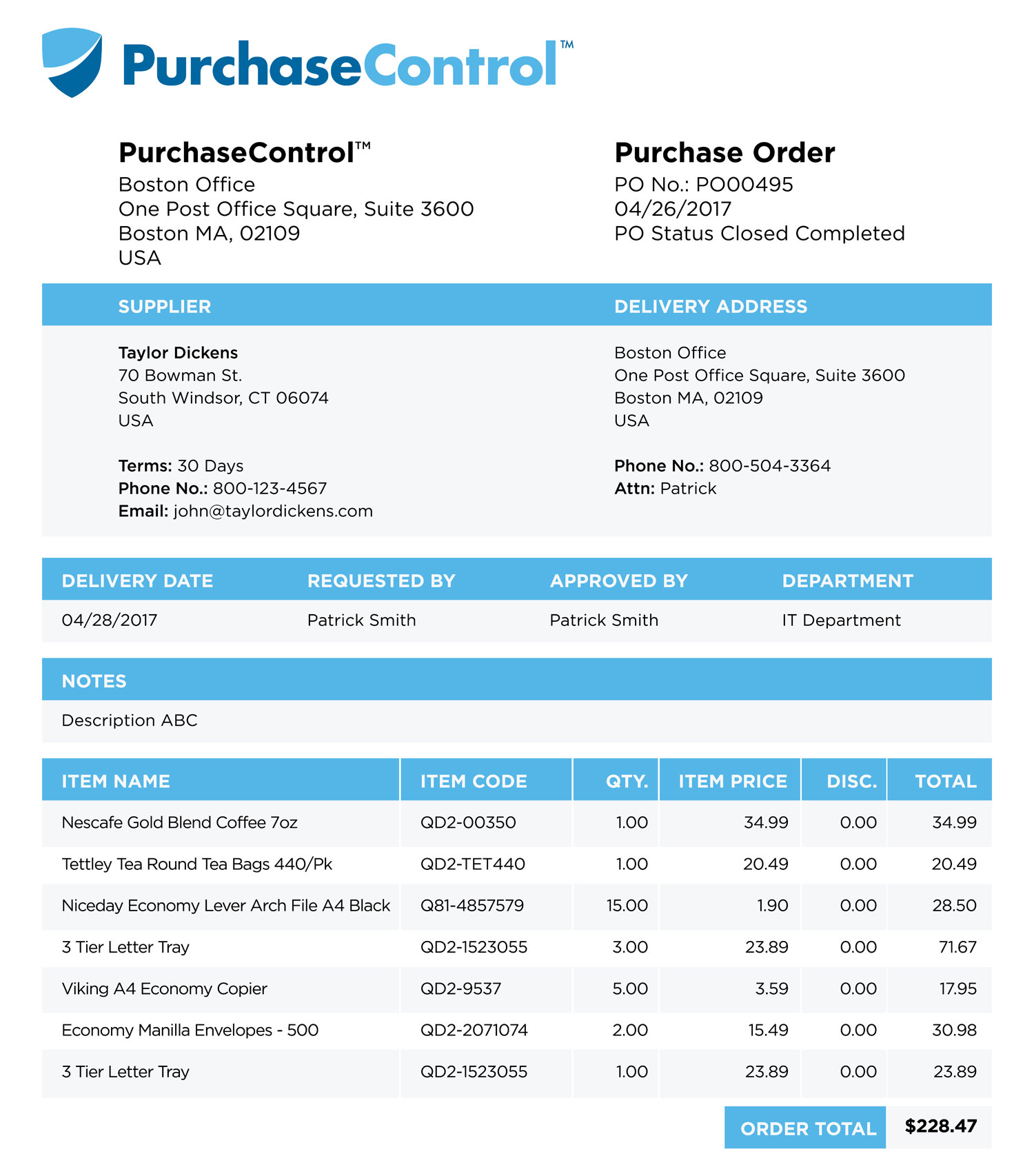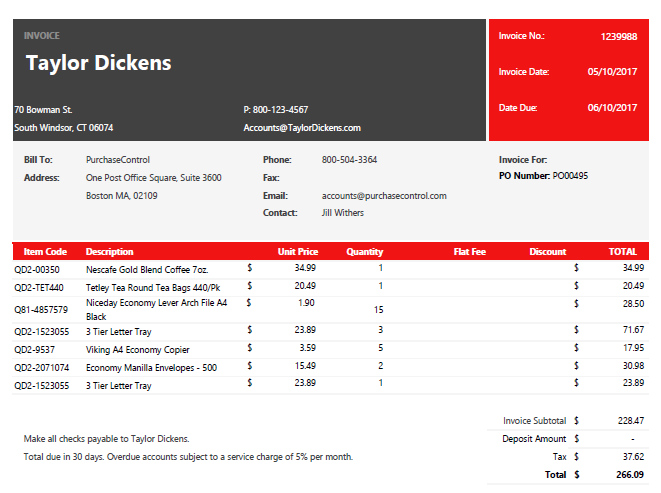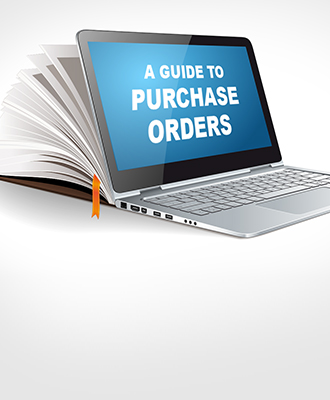Purchase orders and invoices are documents that nearly every finance department deals with on a daily basis. So, what are these two documents, and why are they such an important part of the accounts payable process?
What is a purchase order?
A purchase order (PO) is the official confirmation of an order. It is a document sent from a purchaser to a vendor that authorizes a purchase.
Here is a sample purchase order:
What is an invoice?
An invoice requests payment for a purchase. Invoices are sent from the vendor to the purchaser.
Here is a sample invoice:
What is the difference between a purchase order and an invoice?
The key difference between a purchase order and an invoice is that a purchase order confirms that an order has been placed while an invoice requests payment for an order.
Here are all of the differences between each document:
| Key Info | Purchase Order | Invoice |
|---|---|---|
| What it is | Official confirmation of an order | Request for payment for an order |
| Who initiates it | Purchaser | Vendor |
| Who receives it | Vendor | Purchaser |
| When it is sent | At the onset of an order | After the order is complete per the payment terms |
| What it contains |
| Same information as on purchase order, plus:
|
What are the similarities between a purchase order and an invoice?
While these documents are quite different, there are a couple of similarities.
Both documents are legally binding contracts. This means that the agreement has been made by both the purchaser and the vendor, and that the actions they contain are required.
In addition, both the PO and the invoice include order details, mailing information, and price. The invoice also includes an invoice number, vendor contact information, payment adjustments (credits or discounts), payment schedule, and the total amount due to the vendor. The PO number is also often included on the invoice as a reference.
If you’re looking for more information about purchase orders, read our blog post on the difference between a purchase requisition and a purchase order.
Why do companies use purchase orders?
Whether it is in a small business or a large organization with a full purchasing department, purchase orders are used for several reasons:
They set clear expectations
POs enable purchasers to clarify their needs to vendors. Both parties can use them in case orders are not delivered as expected.
They help manage orders
POs give procurement, finance, and operations teams official documentation of incoming or pending deliveries, enabling them to track and manage orders more effectively.
They help with budgeting
Once a PO is created, purchasers can factor these costs into company budgets and therefore, spend more wisely.
They are legally binding
In the absence of a formal contract, a PO can serve as a legally binding document, but only after it is accepted by the vendor.
They are a key part of audit trails
Auditors are on the lookout for financial discrepancies. Issuing, processing, and recording POs ensures you have what you need to fend off auditors.
The benefits above are geared towards purchasers, but POs are important documents for vendors as well. Vendors use them for order fulfillment and payment processing.
Read our Purchase Order Process blog post to learn how a purchase order request turns into a purchase order, when businesses need purchase orders and when they don’t.
Why do companies use invoices?
Companies use invoices for the following reasons:
They enable vendors to collect money
Most vendors don’t receive payment for a good or service until after an invoice is sent to the purchaser. A phone call or email requesting payment won’t suffice.
They provide visibility into company spending
Invoices describe exactly what you’re getting for your money, which gives finance departments transparency into what different departments buy.
They help manage payments
Invoices show what goods or services were sold, how much money has been paid to date, and any outstanding charges. They help companies keep track of payments in a formal way.
Some of the benefits of invoices are similar to that of purchase orders.
Like POs, they are legally binding
An invoice shows that a particular good or service was provided and when payment is expected. Invoices prove that businesses are charged for a good or service in case payment is not received.
Like POs, they are a key part of audit trails
Auditors require evidence of all money going in and out of businesses. Since invoices show exactly what a business was charged for a good or service, they are a crucial part of this evidence.
Conclusion
Invoices and purchase orders are a vital part of a company’s purchasing process. Understanding the roles that invoices and purchase orders play is important for anyone involved in purchasing goods or services on behalf of an organization. The key difference between a purchase order and an invoice is that a purchase order is sent from a purchaser to a vendor to place an order while an invoice is sent from a vendor to a purchaser to request payment for an order.
Streamline and automate the management of your POs with PurchaseControl's purchase order software
Find Out How










